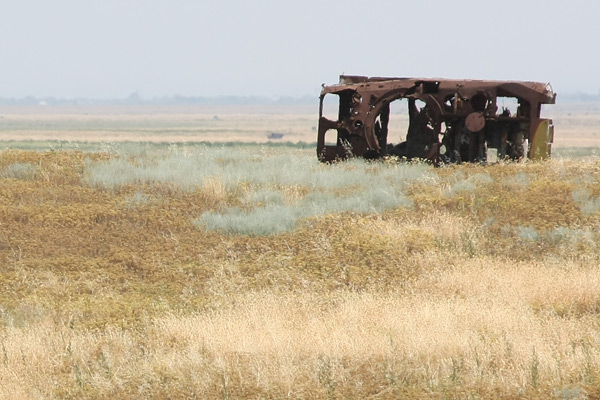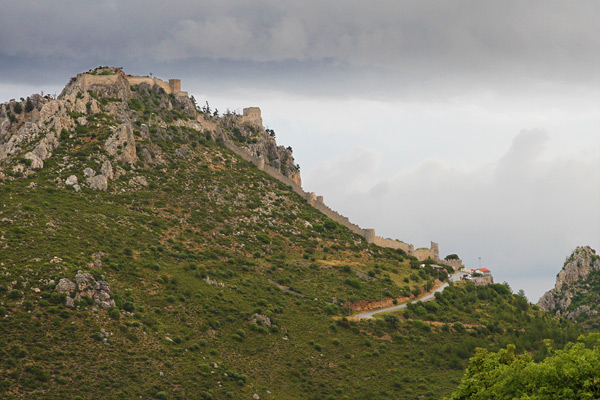Historical places in Europe

© John Smith

The road from Stepanakert to Martakert goes close to the old front line. Here, you can still see relics from the war, like demolished houses and the occasional burned tank standing in a field of wildflowers that eventually turns into Azerbaijan in the distance.

© John Smith

Along the North-South highway, you will see several ancient cemeteries with tombstones sticking up over the high grass. The tombstones have inscriptions on them, some in Armenian and some in Arabic. We don't know the story behind them, sorry.

© John Smith

Tigranakert was an old powerful Armenian city founded about 100-50 BC by King Tigran the Great. Today, there is not much left of the city besides some wall ruins and the extremely well restored Tigranakert fortress which now functions as an archaeology museum - it is very impressive if you are into ancient potsherds and such things.
Former home of Khans (kings) the town of Sheki, in western Azerbaijan, is a treasure-trove of historical architecture. On a small fortified hill, near the centre of town, sits the wonderful Palace of Sheki Khans. An amazing example of period architecture in all it's splendour. Also within the fort grounds are several excellently preserved Albanian churches. And while the town has a number of hotel choices, one cannot resist staying in the 18th century Caravansary Hotel. Although rather simple, this is an absoute bargain considering the building seemingly transports you back to a time long since past. Priceless!
Inside the small Boyana Church are some of the finest frescoes in the world - the reason why it’s an UNESCO World Heritage site. It’s easy to see that the small church is made up of three sections. The oldest dating back to the 10th century with impressive mural paintings. When the second section was added the 13th century, the whole interior, including the first section, was done up with a new layer of even more impressive frescoes, which is today considered by art historians as predecessor of European rennanciane. The church went through a careful restoration in, so today you can see parts of both the original frescoes along with the second layer. The church stopped function as a church in 1954 and today only 8 visitors can see the interior at a time (but not that many visit the church
Dubrovnik is the iconic Adriatic medieval walled city. In the Middle Ages it flourished in maritime trading as the city-state of Ragusa and was rivaling Venice. During the Yugoslavian war, in the beginning of the 90's, it was sieged for seven month and got severe damaged by artillery attacks. Today Dubrovnik is again insane pretty and manicured to limit that it's almost too much. Just to top it off, there are beaches (pebbles though, not sand) with the most crystal-clear water you can imagine, but screamingly cold. All this makes of course Dubrovnik to the perfect tourist magnet and the stream of tourist buses also seems never-ending, but it is still possible to find adorable corners, without being run over by sunburned tour group.
You have to very interested in history to find this sight exiting. Nevertheless, it is a fine collection of stone walls from a bronze-age town – about 1800-1000 BC. The evidence shows, that it was once a center for copper production and was connected to the sea. Then some major earthquake happened, the waterways got silted up, and that was the end of the town. Of course, all this is not apparent when walking around on the almost deserted site today. There haven't been any excavation going on since 1974, but maybe one day the site will be fully uncovered.
During at long period in ancient times Paphos was a Roman city (around 2nd and 3rd century AD). It was a prosperous place where exquisite tiles floors were in high fashion among the wealthy. These colourful mosaic floors have been preserved to this day and is now the second UNESCO World Heritage Site in Paphos – the other are the Tombs of the Kings. Each mosaic tells a story, often about Greek mythology. They are a part of the sprawling Paphos Archaeological Site which begins down at Paphos harbour.
This castle is definitely a contender for the most dramatic location. Perched on a ridge at the top of a jagged mountain cling this castle. It was original built in the 11th century on top of an existing monastery from the 10th century, which the castle is named by. The St. Hilarion Castle was a part of the defense of Kyrenia (Girne) and the northern coast. You can explore the castle by climbing winding and steep tracks. Keep in mind, that the view of the castle is almost better from the distance.
The splendid Roman Ruins at Salamis is one of Cyprus's best archaeological site. An extensive area which once was a prosperous Roman city about 2000 years ago. Though most of the structures have been reduced to crumbling walls and columns, making it hard to figure out what they once were, some have been restored to some degree, making it possible to get an idea of how grand the city of Salamis once were. The whole area is kept wild with bushes and high grass covering the ruins, making a visit rather adventurous.









